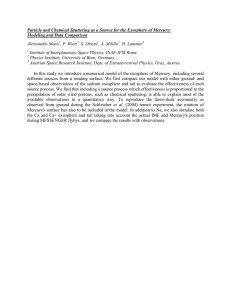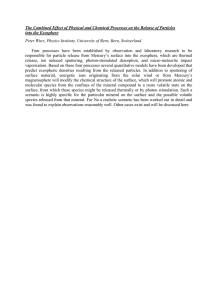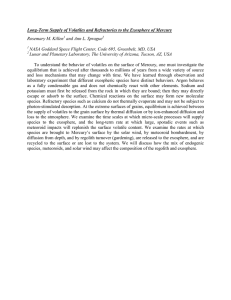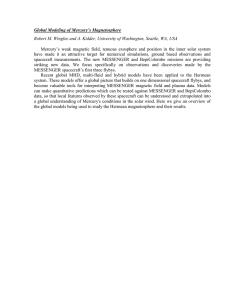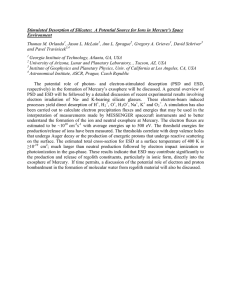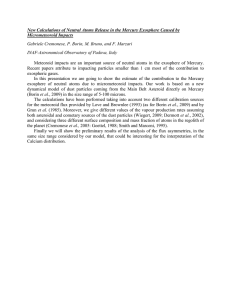HEMO – The Hermean Exosphere Model of Oxygen: A Comprehensive... Interpreting Data from the MESSENGER and BepiColombo Missions to Mercury
advertisement
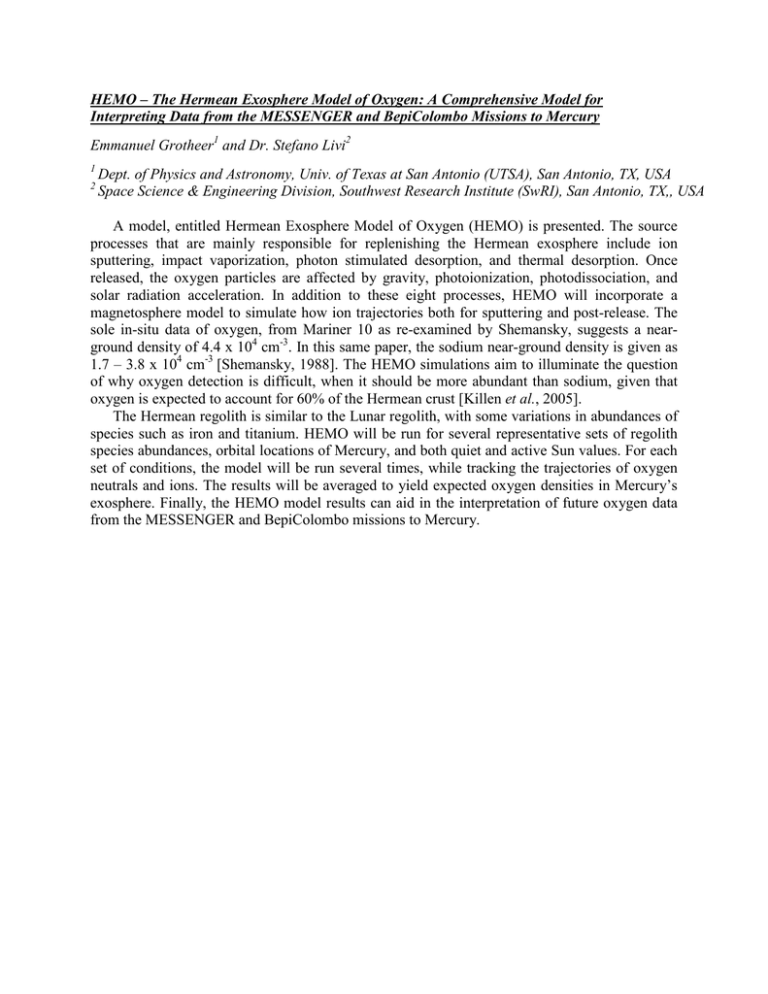
HEMO – The Hermean Exosphere Model of Oxygen: A Comprehensive Model for Interpreting Data from the MESSENGER and BepiColombo Missions to Mercury Emmanuel Grotheer1 and Dr. Stefano Livi2 1 2 Dept. of Physics and Astronomy, Univ. of Texas at San Antonio (UTSA), San Antonio, TX, USA Space Science & Engineering Division, Southwest Research Institute (SwRI), San Antonio, TX,, USA A model, entitled Hermean Exosphere Model of Oxygen (HEMO) is presented. The source processes that are mainly responsible for replenishing the Hermean exosphere include ion sputtering, impact vaporization, photon stimulated desorption, and thermal desorption. Once released, the oxygen particles are affected by gravity, photoionization, photodissociation, and solar radiation acceleration. In addition to these eight processes, HEMO will incorporate a magnetosphere model to simulate how ion trajectories both for sputtering and post-release. The sole in-situ data of oxygen, from Mariner 10 as re-examined by Shemansky, suggests a nearground density of 4.4 x 104 cm-3. In this same paper, the sodium near-ground density is given as 1.7 – 3.8 x 104 cm-3 [Shemansky, 1988]. The HEMO simulations aim to illuminate the question of why oxygen detection is difficult, when it should be more abundant than sodium, given that oxygen is expected to account for 60% of the Hermean crust [Killen et al., 2005]. The Hermean regolith is similar to the Lunar regolith, with some variations in abundances of species such as iron and titanium. HEMO will be run for several representative sets of regolith species abundances, orbital locations of Mercury, and both quiet and active Sun values. For each set of conditions, the model will be run several times, while tracking the trajectories of oxygen neutrals and ions. The results will be averaged to yield expected oxygen densities in Mercury’s exosphere. Finally, the HEMO model results can aid in the interpretation of future oxygen data from the MESSENGER and BepiColombo missions to Mercury.
